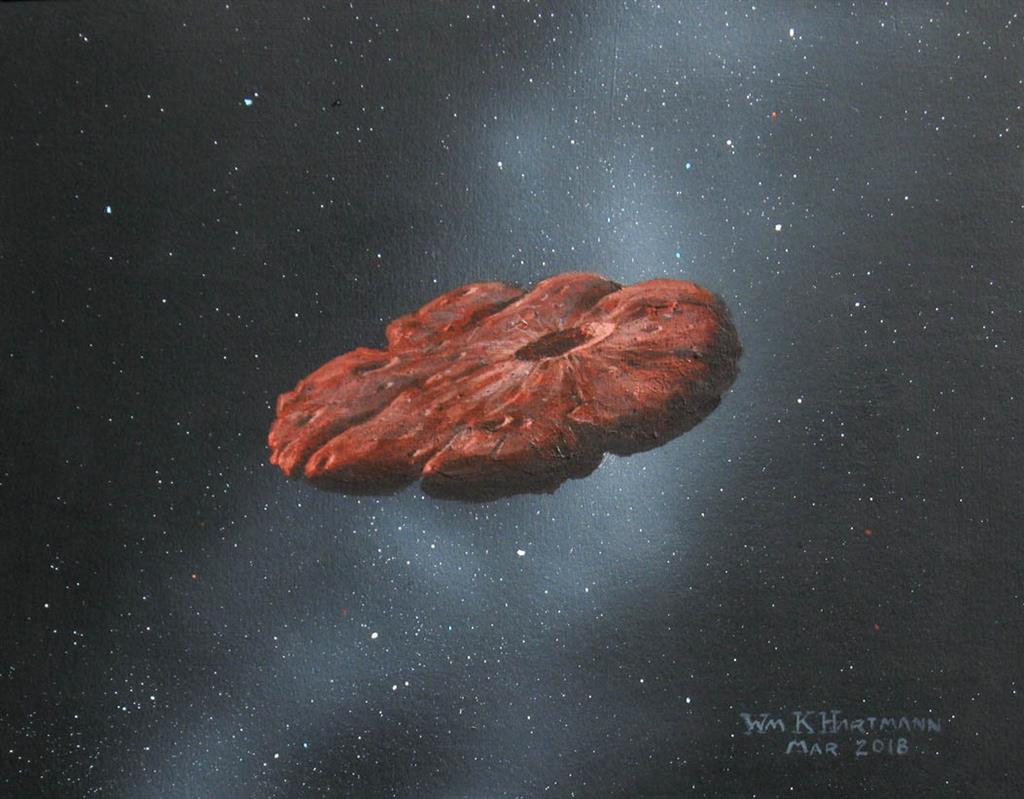MADRID, 17 Mar. (EUROPA PRESS) –
First of all, the first known interstellar object to traverse our solar system, it is probably a part of a Pluto-like planet from another solar system.
It is the conclusion of a new study published as a pair of articles in the Journal of Geophysical Research: Planets.
“This research is exciting because we have probably solved the mystery of what ‘Oumuamua is and can reasonably identify it as a chunk of an exo-Pluto, a Pluto-like planet in another solar system,” said Steven Desch, an astrophysicist at State University. from Arizona and author of the new study. “Until now, we had no way of knowing if other solar systems have planets similar to Pluto, but now we’ve seen a piece of one pass through the earth“.
Discovered in 2017 through the Pan-STARRS astronomical observatory in Hawaii, 1I / 2017 U1 ‘Oumuamua, which means’ explorer or messenger in Hawaiian, sped by at 87.3 kilometers per second. The strangely flat object was like a comet, but with features that were strange enough to defy classification.
“The characteristics of Oumuamua suggest that it is probably made of solid nitrogen, like the surface of Pluto, according to the authors. it’s a statement.
“It was probably torn from the surface by an impact about 500 million years ago and thrown out of its original system,” said Alan Jackson, an astronomer and planetary scientist at Arizona State University and a co-author of the new study. Jackson has presented the research at the 52nd Planetary and Lunar Science Conference.
“Oumuamua was probably not flat when it entered our solar system, but it melted into a splinter shape, losing more than 95% of its mass, during its close encounter with the Sun, according to Jackson.
“The fact that it is made of frozen nitrogen also explains the unusual shape of ‘Oumuamua. As the outer layers of nitrogen ice evaporated, the body’s shape it would have become progressively flattened, just like a bar of soap does when the outer layers rub off with use“Jackson said.
From observations of the object, Desch and Jackson determined several characteristics of the object that they differed from what would be expected of a comet.
The object entered the solar system at a slightly slower speed than expected, indicating that it had not traveled in interstellar space for over a billion years or so.
Its pancake shape it was also flatter than any other known object in the solar system.
The object acquired a slight push away from the Sun, a “rocket effect” common in comets when sunlight vaporizes the ice they are made of, but the push was stronger than could be explained. Finally, the object lacked a detectable gas leak, which is usually visibly depicted on the tail of a comet.
“In many ways, ‘Oumuamua resembled a comet, but it was peculiar enough in many respects that mystery surrounded its nature, and speculation ran rampant about what it was,” Desch said. In total, the object looked a lot like a comet, but it was unlike any comet that had been observed in the solar system.
Desch and Jackson hypothesized that the object was made of different ices and calculated how quickly these ices would sublimate (from a solid to a gas) when ‘Oumuamua passed through the Sun.’ From there, they calculated the rocket effect, the mass and shape of the object, and the reflectivity of the ice.
“That was an exciting time for us,” Desch said. “We realized that a chunk of ice would be much more reflective than people expected, which meant it could be smaller. The same rocket effect would give ‘Oumuamua a bigger push, bigger than comets usually experience.’
Desch and Jackson found one particular ice, solid nitrogen, that provided an exact match to all of the object’s features simultaneously. And since solid nitrogen ice can be seen on Pluto’s surface, it is possible that a comet-like object is made of the same material.
“We knew we had gotten the right idea when we completed the calculation of what albedo (how reflective the body is) would make the movement of ‘Oumuamua’ match the observations,” Jackson said. “That value turned out to be the same as what we observed on the surface of Pluto or Triton, bodies covered in nitrogen ice.”
Desch and Jackson calculated the rate at which chunks of solid nitrogen ice would have detached from the surfaces of Pluto and similar bodies early in the history of our solar system. And they calculated the probability that chunks of solid nitrogen ice from other solar systems would reach our own.
–


